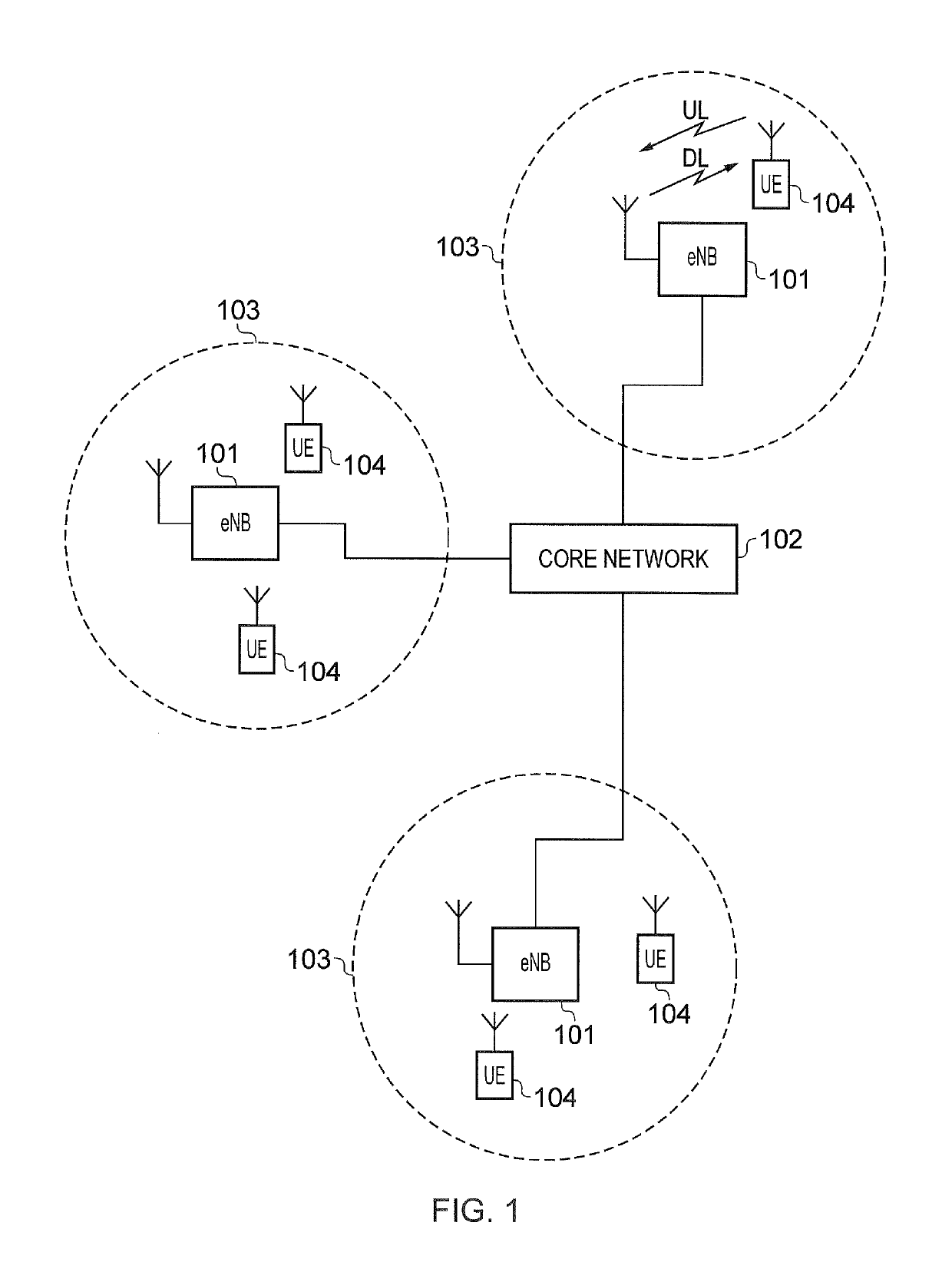Fully parallel turbo decoding
a turbo decoder and fully parallel technology, applied in the field of detection circuits, can solve the problems of limiting the end-to-end latency, requiring thousands of time periods to complete the iterative decoding process of the state-of-the-art turbo decoder, and achieving transmission throughput is limited
- Summary
- Abstract
- Description
- Claims
- Application Information
AI Technical Summary
Benefits of technology
Problems solved by technology
Method used
Image
Examples
Embodiment Construction
Example Communications System
[0039]FIG. 1 provides a schematic diagram of a conventional mobile telecommunications system 100, where the system includes mobile communications devices 101, infrastructure equipment 102 and a core network 103. The infrastructure equipment may also be referred to as a base station, network element, enhanced Node B (eNodeB) or a coordinating entity for example, and provides a wireless access interface to the one or more communications devices within a coverage area or cell. The one or more mobile communications devices may communicate data via the transmission and reception of signals representing data using the wireless access interface. The network entity 102 is communicatively linked to the core network 103 where the core network may be connected to one or more other communications systems or networks which have a similar structure to that formed from communications devices 101 and infrastructure equipment 102. The core network may also provide functi...
PUM
 Login to View More
Login to View More Abstract
Description
Claims
Application Information
 Login to View More
Login to View More - R&D
- Intellectual Property
- Life Sciences
- Materials
- Tech Scout
- Unparalleled Data Quality
- Higher Quality Content
- 60% Fewer Hallucinations
Browse by: Latest US Patents, China's latest patents, Technical Efficacy Thesaurus, Application Domain, Technology Topic, Popular Technical Reports.
© 2025 PatSnap. All rights reserved.Legal|Privacy policy|Modern Slavery Act Transparency Statement|Sitemap|About US| Contact US: help@patsnap.com



